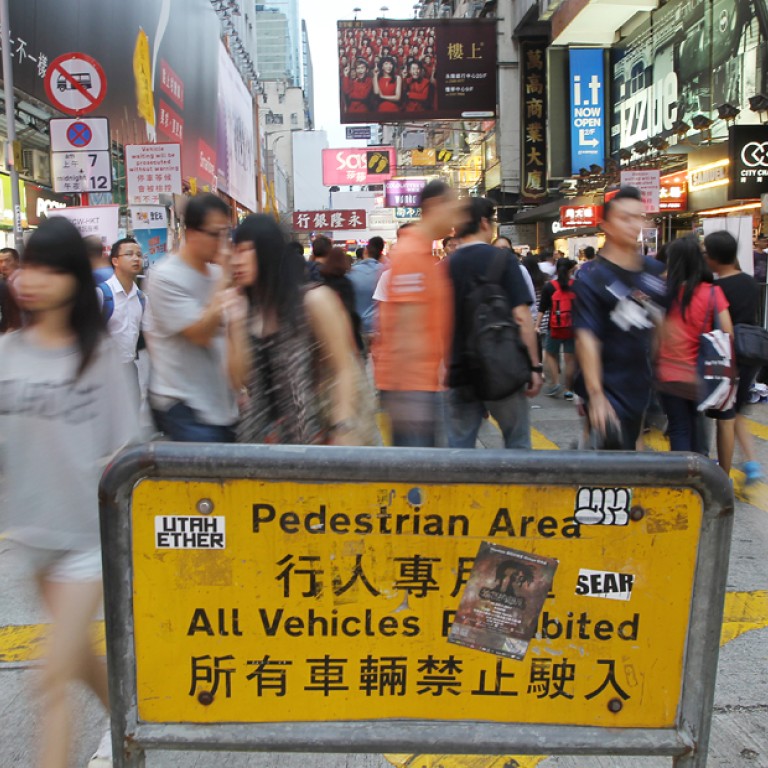
More pedestrianised areas can boost air quality and safety
Upon the unveiling of the ambitious Clean Air Plan for Hong Kong in March last year, undersecretary for environment Christine Loh Kung-wai said that the government was in the process of exploring the possibility of expanding pedestrianisation as one of the tougher measures to cut down on nitrogen dioxide levels, but it was not included in the plan.
Upon the unveiling of the ambitious Clean Air Plan for Hong Kong in March last year, undersecretary for environment Christine Loh Kung-wai said that the government was in the process of exploring the possibility of expanding pedestrianisation as one of the tougher measures to cut down on nitrogen dioxide levels, but it was not included in the plan.
Pedestrianisation brings a host of benefits, including better health for those in the vicinity due to lower exposure to roadside emissions, lower road accident rates, increased business, and so on.
Unfortunately this has already taken a step back after the Yau Tsim Mong District Council voted 24-0, with one abstention, to open the Sai Yeung Choi Street pedestrian zone in Mong Kok back to traffic on weekday nights, citing complaints of "nuisance" from residents.
The Transport Department says up to 20,000 pedestrians walk through this street each hour.
Following implementation of this policy in the coming months, the remaining undeterred pedestrians will probably resort to shoving each other on the narrow pavements while taking in whiffs of cigarette smoke, or simply walk on the road, which would be shared with vehicles and thus dangerous.
Besides, won't the increased traffic fumes and accidents cause even more nuisance? Sadly, instead of moving to regulate the use of space (for example, prohibiting certain types of street performance) so as to reduce the nuisance at source, the government has conceded and taken to the draconian approach of simply cutting it off altogether.
In contrast, a permanent 30,000 sq ft pedestrian plaza was unveiled in late December on Broadway in New York's Times Square four years after an initial pilot project. This has been part of a progressive movement, spearheaded by then mayor Michael Bloomberg, to introduce more pedestrian plazas.
While controversial, the plaza achieved a 40 to 60 per cent decrease in vehicle-generated pollutants and business has flourished. No one sums it up better than New York's transport commissioner, who was quoted saying, "It was crowded, it was dangerous, it was certainly not worthy of a world-class city", prior to the pedestrianisation.
Why won't Hong Kong officials realise this?
What we need are more pedestrian plazas, not fewer. To give the Hong Kong Transport Department credit, it has been introducing pedestrian zones since 2000, but clearly we are not moving fast enough.

